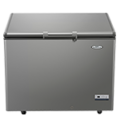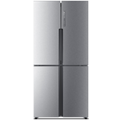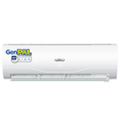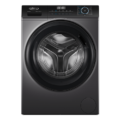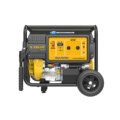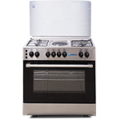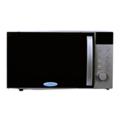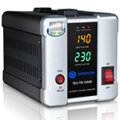Generator Buying Guide
If you depend on your Generator as a backup power unit in the event of power outage or for your business or for an event, you will know the importance of having the right generator for the job when you need it. There are numerous domestic as well as large scale applications of generators. At a glance it may seem extremely difficult to discover the generator that is perfect for your needs. That’s why we’ve put together this handy generator guide, so you can find one that perfectly suits the task at hand.
How to select the right type of generator you need
- What do you need to power? Make a list.
Ask yourself what you will need to power during a power outage. You may need to power all your home appliances or just a few important ones; e.g. Lightings, Freezer, ceiling fan, and televisions.
- Determine power (Wattage) required to start each appliance
Ensure you’ll be able to start (not simply run) your appliances. The “starting wattage” is the amount of wattage needed to start an appliance such as an air conditioner or a refrigerator and it may be 2 to 3 times the wattage required to run the appliance continuously. Check the nameplates on your appliances to see start-up wattages or max wattage and the running wattage or the rated wattage. You can also check our home appliances wattage guide at the end of this presentation.
Notes:
- To convert Kilowatts (kW) to Watts (W) multiply by 1000
- 2kW to W is equal to:- 2 x 1000 = 2000W
- To convert Watts (W) to Kilowatts (kW) divide by 1000
- 5000W to kW is equal to- 5000 ÷1000 =5kW
- To convert Kilo-volt-amps (kVA) to Kilowatts (kW) multiply by 0.8
- 2.5kVA to kW is equal to: 2.5 x 0.8 = 2kW
- To convert Kilowatts (kW) to Kilo-volt-amps (kVA) divide by 0.8
- 3Kw to kVA is equal to: 3 ÷ 0.8 = 3.75kVA
- Calculate your total power needs
Now that you have all your appliances wattages listed out, you are ready to go! First, add up all the “running wattage” for all the items you have listed. This sum is the total running watts your generator needs to produce simply to run your appliances. Next, add to the above sum the highest of the “starting wattages” you wrote down above. Now you know how much power you need to start and run your appliances and equipment! Let’s look at the below typical situation.
To power 1unit of 1hp AC (Non-inverter) + 6units light bulbs +1unit freezer + 1unit 43” LCD, what size of generator do I need?
- Make a list of the starting and running wattages of the appliances using our wattage table as a reference.
| Appliances | Approximate Rated Wattage | Approximate Starting Wattage |
| Light bulb (Energy Saving) | 18 | 18 |
| Freezer | 550 | 1350 |
| 1HP Split AC (non-inverter) | 1000 | 2100 |
| LCD TV (43″) | 70 | 70 |
- Calculate your total power need
Note: The AC has the highest Starting wattage and remember we have 6pcs f bulbs, so here we go:
Total wattage = (6×18) + 550 + 2100 + 70 = 2828 watts = 2.828kW
2.828kW ÷ 0.8 = 3.535kVA
Bravo! You will require a 2.8kW or a 3.5kVA generator to power the above appliances.
This is the equivalent of TEC Hustler4000ES, 3.75kVA petrol generator.
Generator Features and Accessories Available to You
Aside from pure power output, there are a couple of useful features and accessories you will need to know about when purchasing a power generating set. They are:
● Starting Method: 3 options exist. Recoil or pull start, Button start and Remote start. The Button or Remote start offer the best starting convenience. TEC generators come in all the 3 options.
● Wheels & Handle Bars: Large size generators usually come with wheels and handle bars for easy mobility while small generators may or may not have these add-ons. TEC generator offers both options.
- Display Types: Displays give the indication of the voltage output and/or Frequency, Running time, and power output on your generators. There are 2 types of displays; Analogue display and Digital display.
The analogue display gives only the indication voltage output from the generator and it’s usually around 220volts to 230volts.
The digital display is able to display more output parameters such including voltage output, Frequency, Total running time, and power out of your generator at the press of a button. These 2 display options are available with TEC generators.
Power Consumption of Some Domestic Appliances
| Electrical Equipment | Approximate Rated Wattage | Approximate Starting Wattage |
| Light bulb (incandescent) | 60 | 60 |
| Light bulb (Energy Saving) | 18 | 18 |
| Refrigerator/Freezer | 550 | 1,350 |
| Water Well Pump (1/3HP) | 575 | 1,440 |
| Electric Water Heater | 3,800 | 3,800 |
| 1HP Split AC (Non inverter) | 1,000 | 2,100 |
| 1.5HP Split AC (Non inverter) | 1,300 | 3,000 |
| Iron | 1,200 | 1,200 |
| Washing Machine | 950 | 2,400 |
| Microwave Oven | 625 | 625 |
| Microwave Oven | 1,000 | 1,000 |
| Food Processor | 500 | 500 |
| Toaster | 850 | 850 |
| DVD Player | 20 | 20 |
| Stereo | 450 | 450 |
| LED TV (32″) | 50 | 50 |
| LED TV (43″) | 70 | 70 |
| LED TV (55″) | 150 | 150 |
The above table is only a guide and some appliances may in watts depending on the brand

